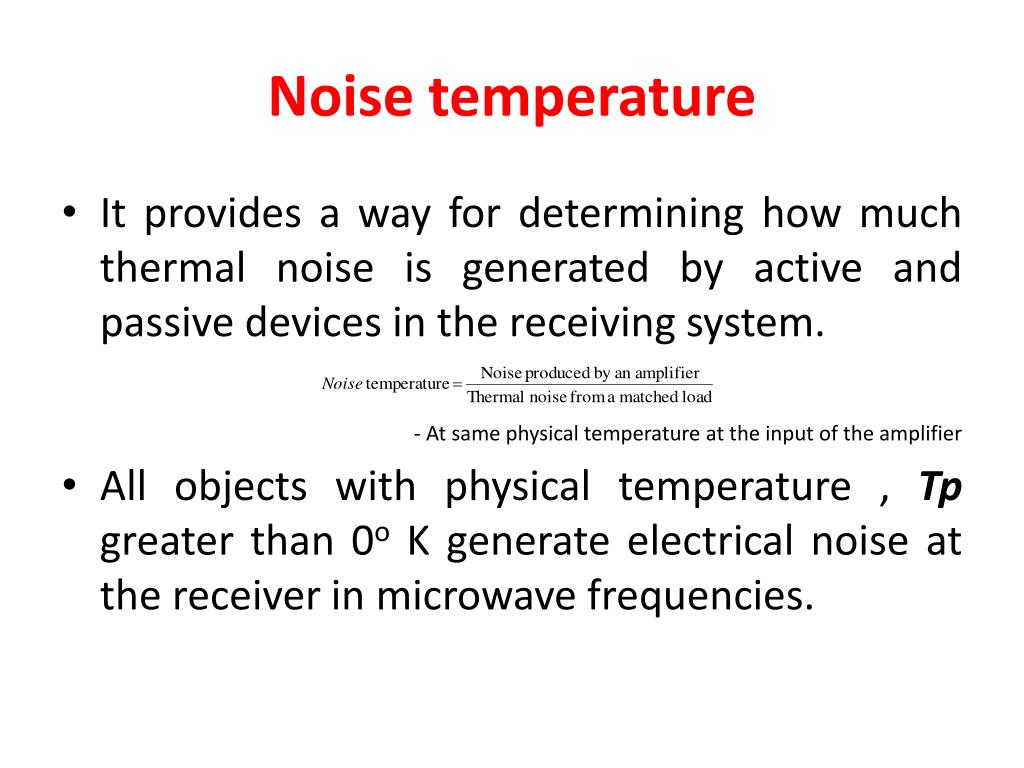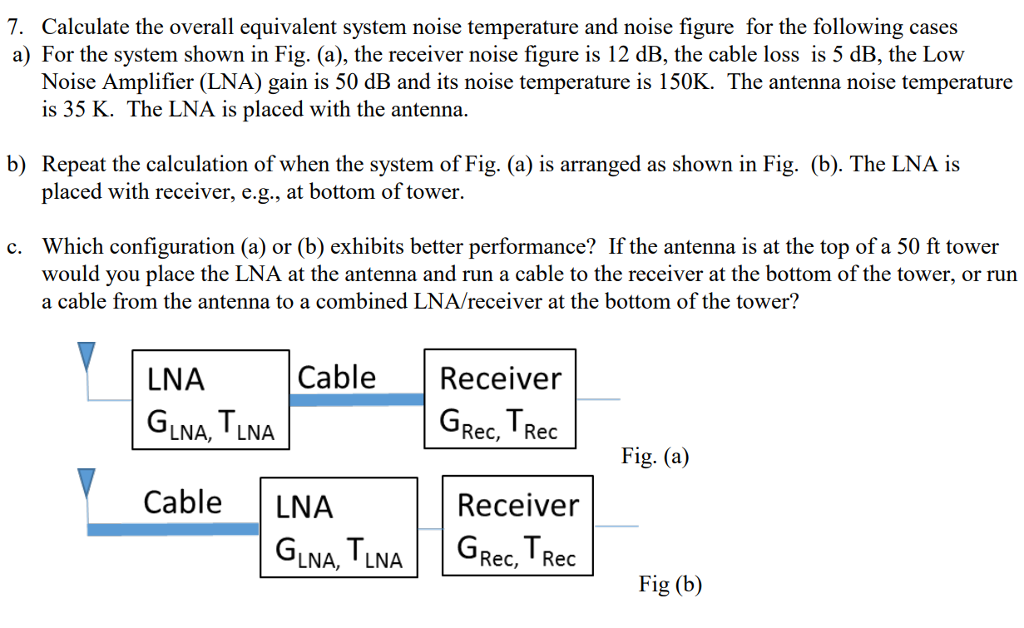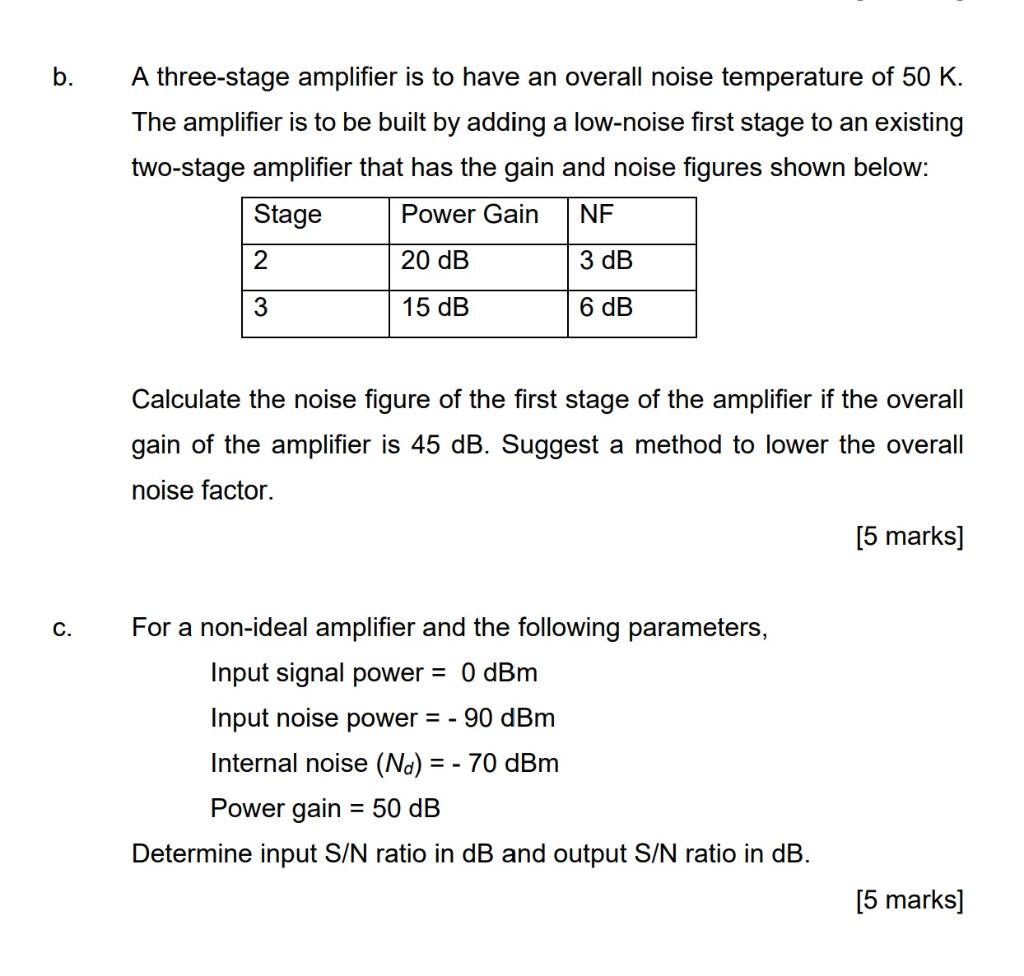
H.W 3-1: For the part of receiver shown below, if the input signal bandwidth is 4 MHz, find: 1- The overall noise figure Ans: 1.016 2- Equivalent noise temperature Ans: 4.65 ºk

Equipment Noise Characterization P s (W) N TH (W) = kTB B Desired Signal Thermal Noise G1G1 GNGN Ideal Components Contained within bandwidth “B” - ppt download

H.W 3-1: For the part of receiver shown below, if the input signal bandwidth is 4 MHz, find: 1- The overall noise figure Ans: 1.016 2- Equivalent noise temperature Ans: 4.65 ºk

SOLVED:Two power amplifiers are connected in cascade with individual Noise Temperatures Te1 = 2030K ( First amplifier )_ and Tez = 290%K (Second Amplifier ) . The overall Noise Temperature of the
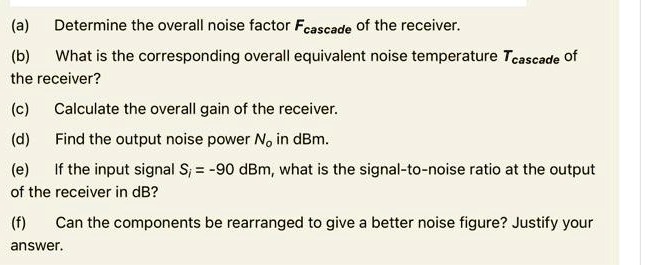


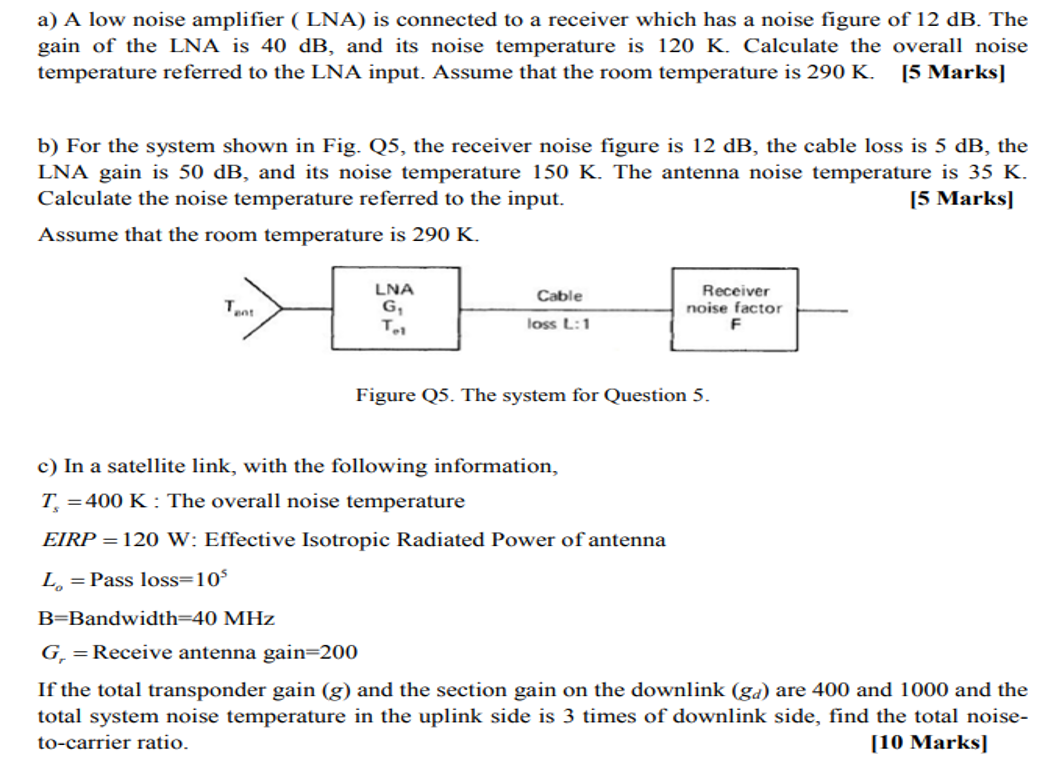



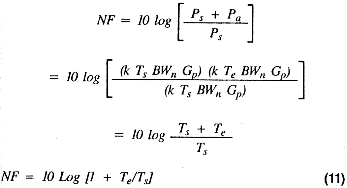
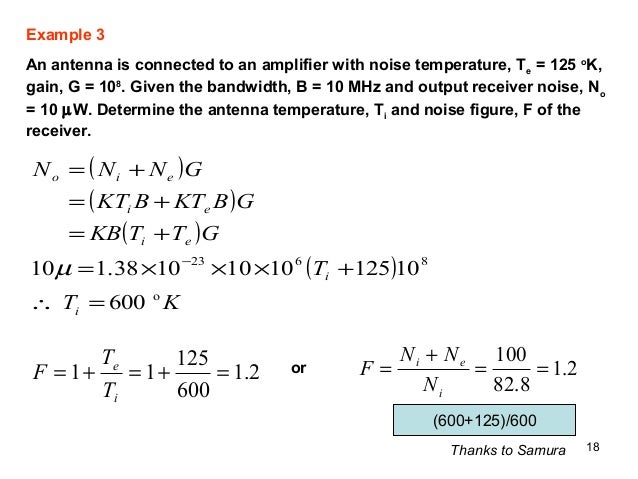
![Question 5 [20 Marks] a) A low noise amplifier (LNA) | Chegg.com Question 5 [20 Marks] a) A low noise amplifier (LNA) | Chegg.com](https://media.cheggcdn.com/media/fb7/fb79d49d-0c3f-4e18-baa7-c1361ff46c70/phpE9AeYx.png)

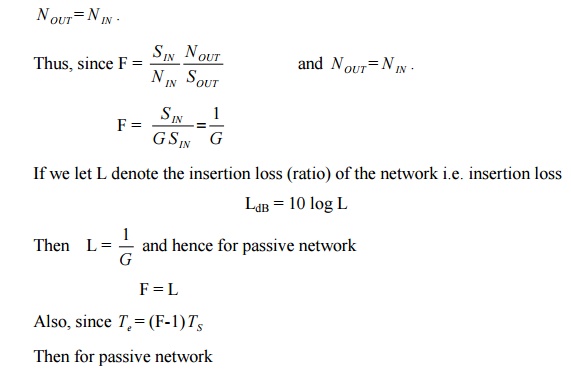



![RF Module Design - [Chapter 2] Noises RF Module Design - [Chapter 2] Noises](https://image.slidesharecdn.com/rfch2-150613070344-lva1-app6892/95/rf-module-design-chapter-2-noises-18-638.jpg?cb=1434179347)
